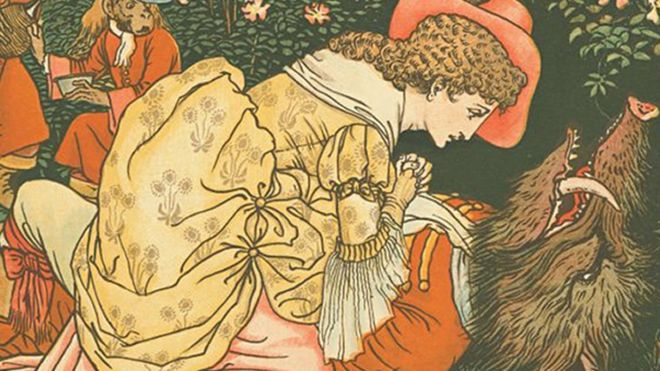BY LAURA ERNE
The new live-action Beauty and the Beast film hit theatres this weekend, breaking many records with its $350 million global box office score. This all-new take on the Disney classic stars Harry Potter’s Hermione, Emma Watson as Belle and Downton Abbey star Dan Stevens as the Beast.
This movie will join other classics like Cinderella, Snow White and Little Red Riding Hood.
But this story didn’t start with Disney. The tale actually dates back to 18th century France.

“The earliest version of something like Beauty and the Beast as we know it–with the broad plot strokes and main characters–was written in French in 1740 and is much longer than the tale we know today,” said Dominick Grace, associate professor at Western University. “Madame de Beaumont adapted it a few years later, publishing her much shorter version in 1756. This is the version from which most of the familiar elements come. Beauty and the Beast, though, unlike many classic fairy tales, was a literary creation, rather than an oral tale transcribed and adapted from folk sources. However, it clearly borrows elements from classic folk tales.”
Beaumont’s story starts off with a rich merchant with his wife and their six children, three boys and three girls. The youngest daughter was called, “Little Beauty” for she was the prettiest and nicest of the children. After getting lost on his way home, her father decides to duck into what he thinks is an empty castle for the night.
Just like the Disney classic, he gets caught by the Beast but this is where it changes. Before he left home he asked his daughters what they wanted him to bring back for them, both of Beauty’s sisters begged for remnants of their old lives like dresses, furs, caps and finery of every kind. But Beauty was different. All she wanted was a rose.
And it is the rose that her father gets caught stealing. The Beast gives him exactly three months before he or one of his three daughters would have to return to the castle. Beauty offers to go in his place and asks him to let her sisters be married despite how they treated her. Every night, the Beast asks her to marry him and every night her response is the same, no. Beauty continues to live at the castle but with sorrow filling her heart. Out of love, the Beast allows her to visit her family with the promise of her return in eight days. But she’s late and finds him dying of hunger because he thought that she had forgotten him. Seeing him like that she realizes that she does want to marry him.
“Beauty and the Beast as originally conceived is very much, on the symbolic level, about a girl becoming a woman, leaving behind the safe and familiar to enter the house of an unknown and therefore frightening masculine stranger who may very well destroy her,” said Grace. “The transformation of the beast into a handsome and loving man reflects the woman’s coming to know the reality of the man, rather than fearing the unknown.”

But this isn’t the only story.
A strong minded heroine was also the base for the Norwegian tale, The East of the Sun and West of the Moon. This folktale was written and collected by Peter Christien Asbjornsen and Jorgen Moe.
This story was published in 1852. Unlike the previous story, the father is poor but it is still the youngest that is the prettiest daughter. The Beast is a White Bear who comes to the family’s cottage to ask for the youngest daughter’s hand in marriage in exchange for riches. While at first she refused the White Bear’s offer, she came to accept it for the good of her family.
Just like Belle, she is not afraid. She is every bit as strong as the character of Belle. Every night he would come and sleep beside her, only after she turned out the light. If she held out for a year, the White Bear would revert back to a Prince. Unknown to her, he was a Prince cursed by his stepmom and turned into the White Bear. Similar to Princess Fiona’s curse in the Dreamworks film, Shrek, however he is a beast by day and a Prince by night. But she revealed his true form by candle light before the year was up. As a result, he had to go back to his troll stepmother and marry the woman of her choosing. He tells the girl that he will be at a land east of the sun and west of the moon. Unhappy with his disappearance, she goes after him.
She travels by the North Wind before finding the stepmother’s castle. She trades all of the gold given to her along her travels to see the Prince. But the stepmother’s daughter drugs the Prince both times that she gets to see him. After learning what the daughter did, the Prince pretended to drink the drug and waited until she left. The Prince is told about the girl by servants and in turn he declares that he will only marry someone who can wash the tallow out of one of his shirts. Claiming that he will not marry anyone who can’t do a simple task such as that because he knows that his stepmother’s troll heritage would prevent her or her daughter from doing it. The girl proves herself by washing the shirt and is deemed worthy. And of course like all Disney movies, this fairy tale has a happily ever after for the girl and the Prince.
“One of my favourite variations on the Beauty and the Beast story is the movie Shrek! This is another gender-reversal one, in which the woman is the one enchanted to be transformed and to be saved from the enchantment only when the right man meets the right conditions (e.g. the kiss of true love in Shrek!),” said Grace. “It has some fun in challenging normative standards of beauty which, of course, tends to be key in most such fairy tales: to be loveable, one must be beautiful, but Shrek! at least acknowledges that beauty is subjective.”
Fairy tales are often seen as tools for parents to teach their kids about morals. For example, the tale of Little Red Riding Hood teaches children about the importance of not talking to strangers. These tales serve as a warning and a reminder about human nature.
Related to: A tale as old as time by Samantha Russell
